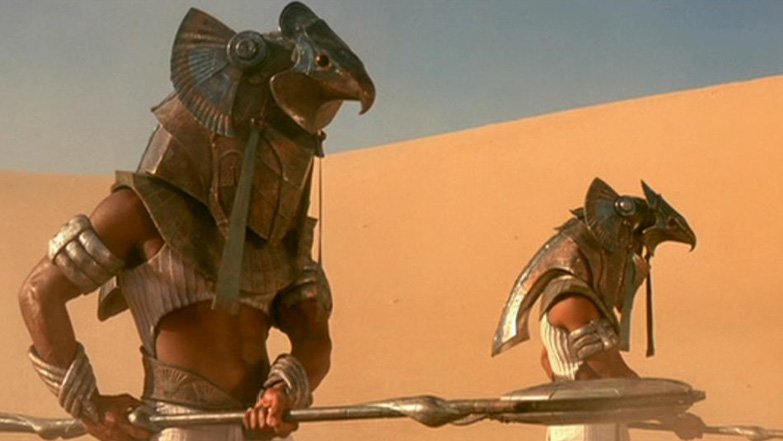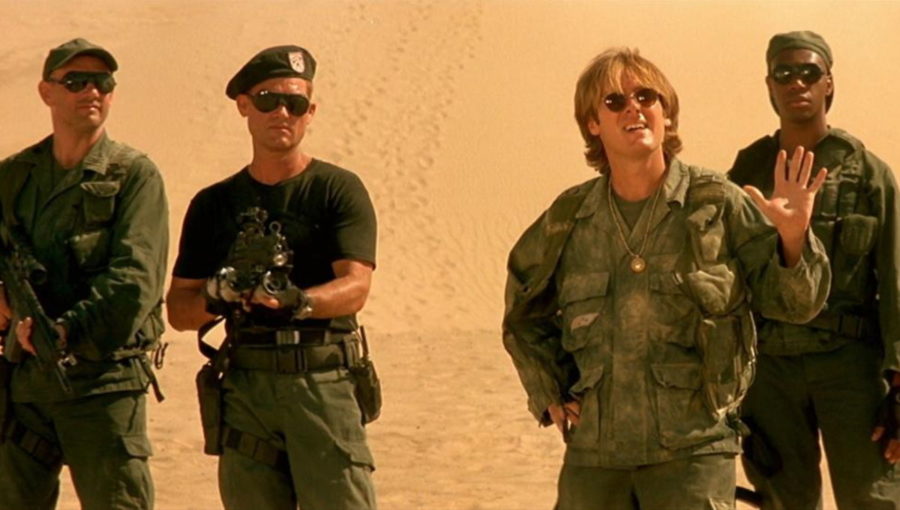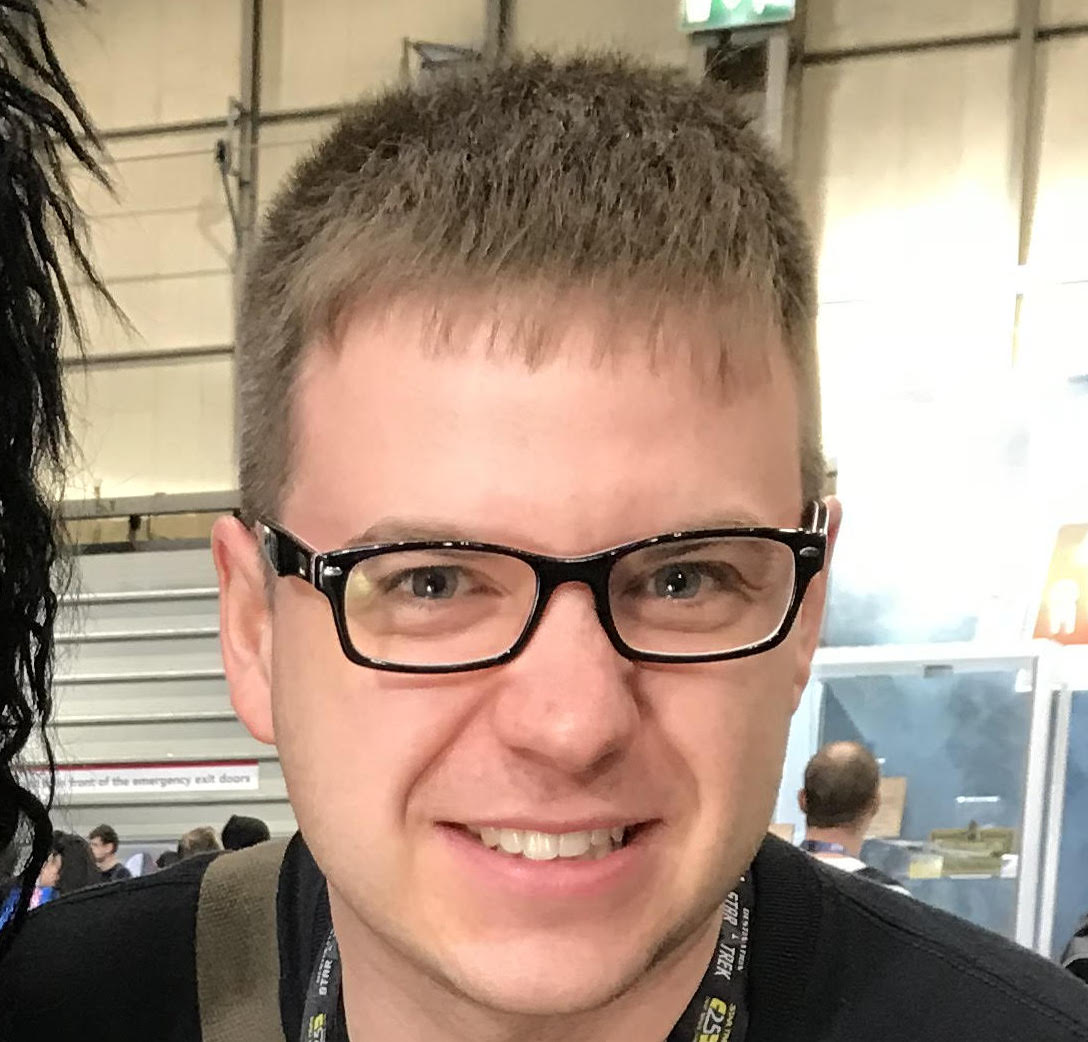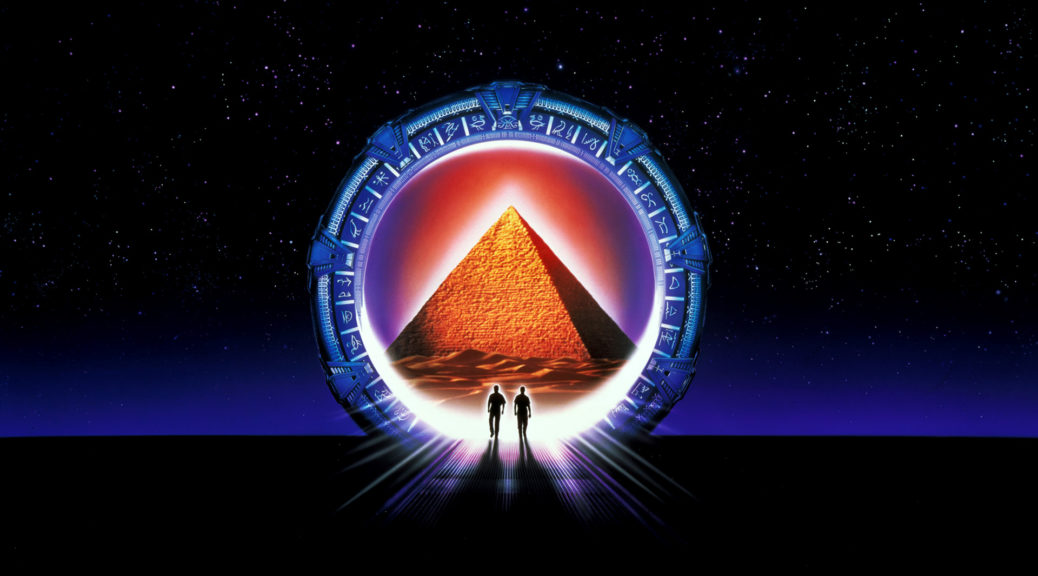UNLOCKING THE GATE – THE ORIGINAL FEATURE FILM
In October of 1994, Stargate hit the cinema screens and became a surprise hit. Critics were not kind to the Roland Emmerich-directed epic adventure, but it struck a chord with audiences with it’s stunning photography and intriguing story. It launched a franchise that has become one of the most popular Science Fiction franchises of all time. A franchise that consists of: 3 films, 3 live action series, 1 animated series and, most recently, a 10 part mini-sode series. Not to mention the various games and books that were released. But we will get to all that in time; first we need to go back to the beginning, to where it all started….The 1994 feature film.
I should probably preface this part of the article with a small statement; it may seem like I am being harsh against the feature film but that is only because of everything that came after. The film started it all and without it we wouldn’t have got SG1 or anything else, however, for me the film just doesn’t hold up in comparison to the series.
The film was originally conceived by Roland Emmerich in the early 1980s as a film about an alien spacecraft that was buried under the Great Pyramids of Giza. Emmerich continued to work on the idea throughout the years and eventually met and became close friends with Dean Devlin. Devlin had an idea about a Laurence of Arabia-type of film set on a distant planet and eventually, they combined their two ideas into one film, and developed the screenplay together. After they garnered commercial success with the 1992 Jean Claude Van Damme film, Universal Soldier, they were able to finally get the budget together to make Stargate. With a budget of $55 million they set about making their vision a reality.
The Stargate as we know it is not how it was originally conceived; the original concept was triangular and would be standing on the tip. However, Emmerich wanted a long-dialing sequence to activate the Stargate and the triangular shape could not achieve this so they changed it to a large ring. The Stargate was actually two rings; a smaller one that could spin was encased in a larger one with chevrons that would “lock” in place. The original gate was black but it looked too much like a tire, so it was painted to a grey colour-which gave it a more metallic finish. The activation of the Stargate (or the “Kawoosh” as it would be later named), was achieved by mounting an air cannon an inch above a water tank and firing it into the water. They would then superimpose the resulting effect over the Stargate. The swirling effect that is at the back of the Stargate (what they referred to as the strudel), was achieved by simply stirring water until it kept whirling on its own. For the shots of the actors faces appearing through the event horizon, they had them put their faces in water; someone would fan away all the air bubbles and they would pull their faces out of the water slowly. When played in reverse, it looked like their face was passing through a wall of water.

When it came to casting the film, Emmerich and Devlin wanted Kurt Russell for Colonel Jack O’Neil. However, Kurt Russell wasn’t interested and turned down the role multiple times before finally accepting it. The character of O’Neil in the film was that of a broken man and we are introduced to him in an apparent suicidal state. Like most of the main characters in the film, his character is quite one dimensional. He is the soldier with nothing to lose. His character arc throughout the film is to go from unable to deal with the loss of his child, to dealing with it and being fine. It’s quite a bizarre arc for the main character of a Science Fiction film. Yes, there are the bad guys to fight but they are more of a catalyst to events that affect O’Neil than any sort of defining character arc for him. His interactions with the people of Abydos are small (with the exception of the character Skaara). His character in the film though is essentially just the token soldier, with the exception of the backstory of his son’s death-there isn’t really any depth to the character.
With the character of Daniel Jackson they cast James Spader, who admitted that he only took on the role for the money. He often clashed with director Roland Emmerich when he didn’t get satisfying answers to questions about his character’s motivation. He would also question some of Emmerich’s creative decisions. Despite these clashes- and the fact that he only took the job for the money- he turned in an outstanding performance and gave the rather cliched nerdy scientist character some depth. The sequence where Sha’uri presents herself to him as a gift is particularly good, as there is very little said and it is all about what is not being said. You can see that whilst attracted to her, he is very uncomfortable with the whole situation. Despite his opinion on the script and his apparent embarrassment of being in a Science Fiction film, Stargate would actually make Spader more of a household name.

Jaye Davidson had been shot to stardom by an incredible performance in The Crying Game as a transgender singer. At the time, he was a little hesitant about whether or not he wanted to continue acting, so when they offered him the part of Ra, he asked for $1 million. When asking for such a high amount of money he expected that they would turn him down but was surprised when they agreed and he took the part. The costume department were forced to work around his nipple rings as Davidson refused to remove them for the part. He also found the costumes so uncomfortable that he very quickly grew to hate them and, on the last day of filming, tore off the clothes and ran through the set completely naked.
For the desert planet of Abydos, the production team went to Yuma in Arizona. Unfortunately, because they shot during the summer, the temperatures got to unbearable levels and everyone was drinking at least 5 gallons of water a day. Due to the heat, nobody actually went to the bathroom, they just sweated all the water out of them. The sand would get everywhere; into camera equipment, clothes, everywhere. Because they had to make the desert look like it was undisturbed, after every take they needed to smooth out the sand as the footprints were massively obvious. They tried several different techniques which included using big fans and even flying a helicopter over, in the end the simple act of using large sweeping brushes to smooth the sand out worked. They had several people on hand ready to sweep the sand after a take.

The sets were epic in scale and grand in design. For the Pyramid, they built a 90-foot-high front that had an 125-foot ramp down to the desert surface. The whole set was built directly into a 500-foot-high sand dune. The rest of the Pyramid was added in post-production with the aid of matte paintings, however, the practical set allowed them to shoot the majority of their shots without the need for any effects work. Practical effects work was always preferred, the Mastidge was a Shire horse they put a large plastic frame on, which had the Mastidge model on it. For the sequence where Daniel Jackson was dragged through the desert, they used a smaller model and put it onto a dog. The dog would drag a small puppet through the desert and they intercut it with shots of a stunt man being dragged to sell the effect. For the final battle sequence, they used 1200 extras, and the final shot of them all cheering in victory was difficult to coordinate due to the sheer number of people who had to all cheer in unison.
The design of Ra’s ship came down to practicality. They wanted a ship that would land on a pyramid, and the best thing to land on a pyramid would be another pyramid. Once they had this in mind, it was simply a question of what else could they do with it. The top opening was a way to get some natural light into the set and allow Ra to look out on everyone. The Death Gliders originally started out as very blocky in design- Emmerich wanted something that didn’t look like it should be able to fly and they had these ships that looked like cargo containers. However, in the testing phase they realised that they looked pretty stupid and abandoned the idea. Patrick Tatopoulos brought in some costume items to a meeting and there was a belt buckle that caught Emmerich’s eye and they used that for the design of the Death Gliders. The practical Gliders they built had a wingspan of 3 feet and were quite difficult to shoot with.
The head pieces for Anubis and Horus were both remote controlled- they would be able to make the ear parts articulate live in camera. The turning of the head was achieved by building the heads on a bearing which allowed the actors to just move their head and move the head piece itself. Ra’s helmet had no moving parts to it but was so detailed that they used it for the opening credits sequence. The details in the helmets was so intricate that you don’t notice most of the detailing on them apart from the Ra helmet, and that is only because of all the close up shots of it in the opening credits sequence.
Interior locations were shot in the Spruce Goose building because they couldn’t find a sound studio big enough to fit in the designed set for Ra’s Throne Room. To prevent scratching the delicate flooring of the Throne Room, crew members wore special booties on set and it would be buffed regularly.
The music for the film was composed by David Arnold. Arnold created an epic score that is still being used in film trailers to this day. It captured the wonder and excitement of the film and seamlessly combined it with the action adventure elements to create a truly unique and incredible score. David Arnold would go onto to work with Emmerich on Independence Day and Godzilla. He would also become the official composer of the James Bond films starting with Tomorrow Never Dies and ending with Quantum of Solace– composing the score for every Bond film during that period. Elements of his score for the film were carried over into the TV series and in the first season they even used tracks from the film (most notably, the track You’re on the Team from the deluxe soundtrack appears several times throughout the first season).

Shortly before release they did a test screening of the film. One of the notes they received was that Ra didn’t seem alien enough, so they added the effect of the glowing eyes just before the release of the film. The film released to mixed reviews; some reviewers criticized the film for relying on the special effects too much and using too many clichés. I can see where they are coming from regarding the clichés- the characters themselves are, for the most part, cliched caricatures. Daniel Jackson is the nerdy science guy with allergies and glasses. Jack O’Neil is the stoic military man of few words who sports a flat top and rarely smiles. However, there are still merits to the film. The practical effects work is a wonder to behold and the early CGI, whilst now it does look dated, was amazing at the time. The film made $200 million at the box office world wide and sequels were planned by Devlin and Emmerich who envisioned Stargate as a trilogy of movies.
In 1995 an Egyptology student named Omar Zuhdi sued the production company for $149 million – claiming that Stargate had been stolen from a manuscript he penned called Egyptscape. The case went on for a while, and whilst the Judge found in favor of Zuhdi, the case was settled out of court for $50,000. Whether or not this played a part in going with a TV series over more films is not clear. Whatever the reason, Studio Canal sold the TV rights to the Stargate film without the knowledge of Emmerich and Devlin.
I may have come across as not a fan of the film in several parts of this article, and in some ways, it is true that I don’t really regard the film in high esteem. The reason for this is because of everything that came after was far superior in my opinion. I think as a concept it was a fantastic idea, but the execution of the idea was not the best in some areas (particularly the characters who relied too much on their cliché stereotypes). However, the film is still an amazing epic, has some incredible production design and a wow factor when it comes to the photography. The epic sweeping shots of the undisturbed desert are beautiful and it laid the groundwork for everything that came next.
NEXT WEEK: PART 2: RE-OPENING THE GATE – STARGATE SG1

Matt is a huge film and TV buff who studied film and moving image production at university. In his spare time he enjoys reading comics and books, the occasional gaming session and writing novels.

